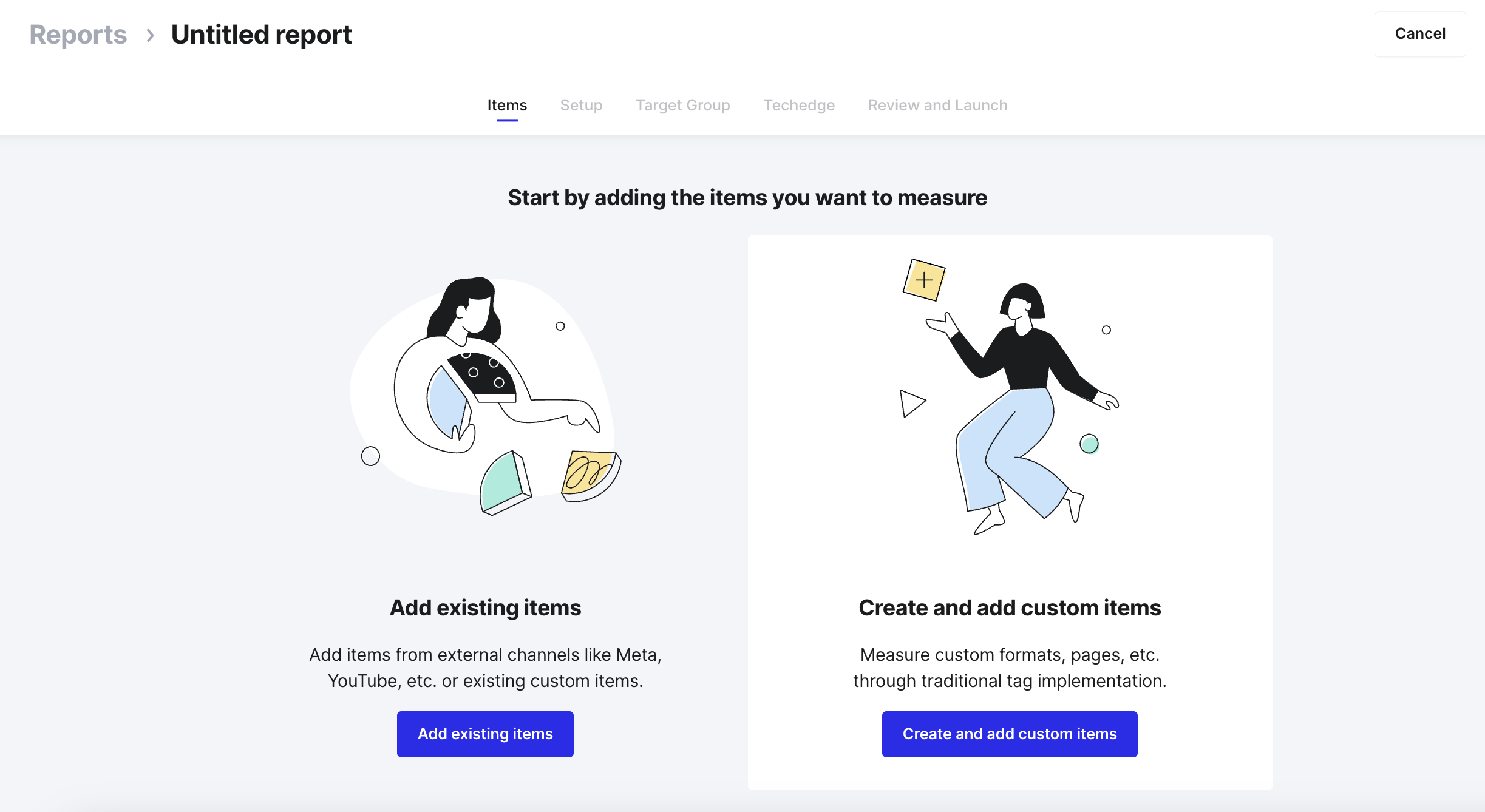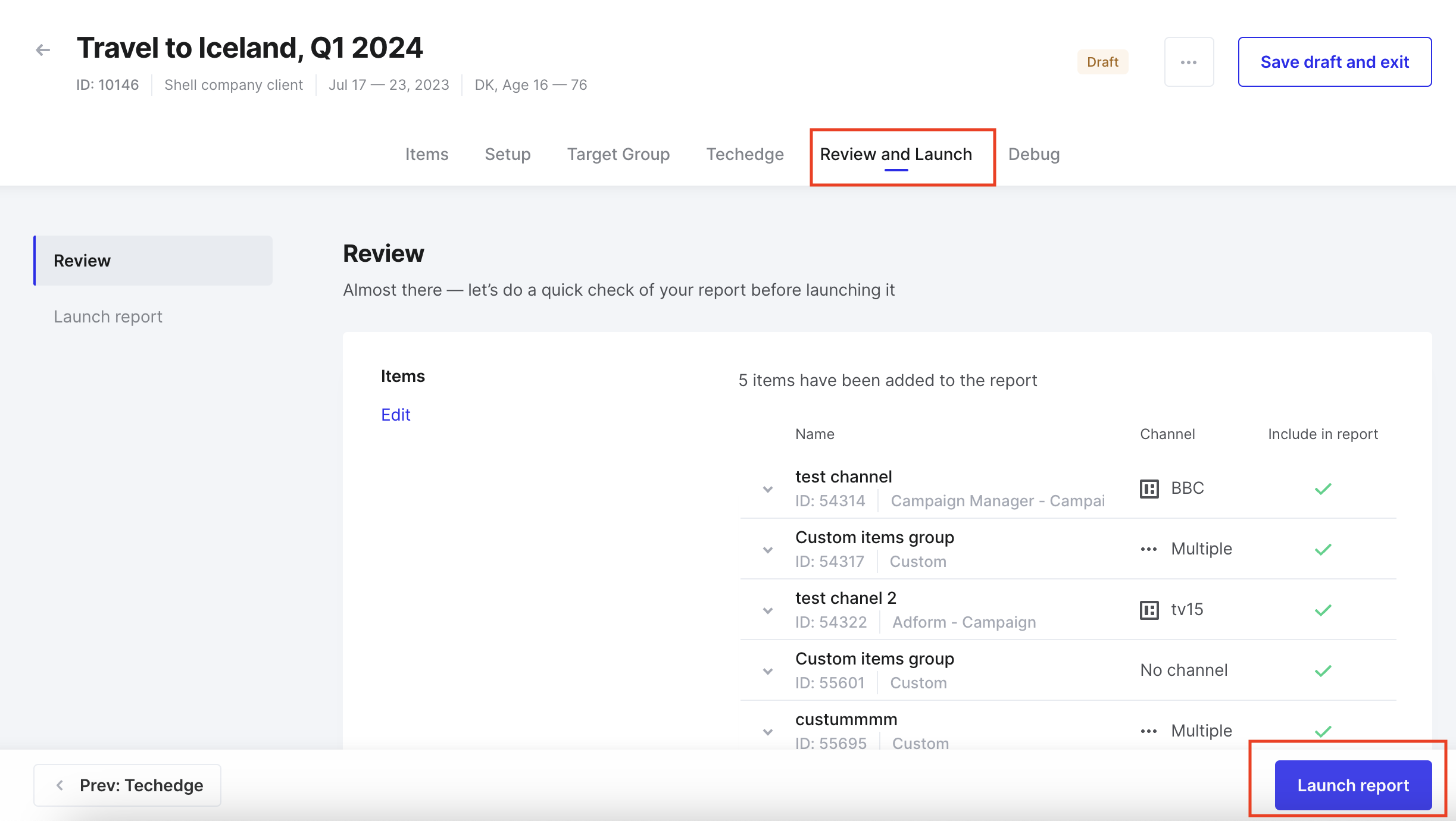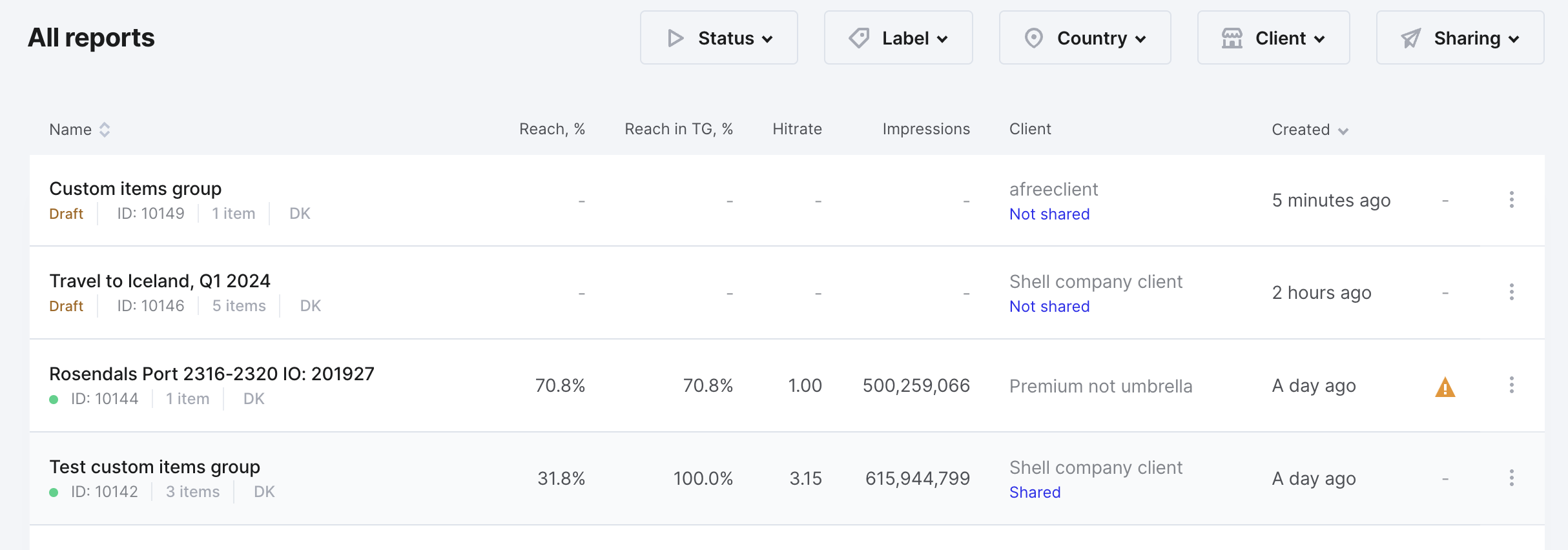AudienceData
Adserver
Best Practices
Do's and dont's when using AudienceData
How to document the accuracy?
Why introduce segments with different affinities?
Using targeting with the right conditioning
DSP
How to access data AudienceData segments in Adform
How to find AudienceData in MediaMath DMP
How to find segments in BidTheatre
How to find segments in Display & Video 360
Data Introduction
Available Segments
Existing integrations
Methodology and precision
The distinction between campaign impression profile and impressions in target group
What is deterministic data?
What is probabilistic data?
Publisher
Accessing targeted data with DFP Audience sync
AdForm publisher integration instructions
How to find data usage information in Google 360 for Publishers former DFP
How to report on AudienceProject segment usage in DFP
Inventory available for realtime targeting in DFP
Lotame integration
Sending targeting key values to AdManager
Troubleshooting
AudienceHub
How to create your first audience
How to create your first seed
Case 1: Selecting a customer file
Case 2: Selecting an Amazon S3 file
Case 3: Selecting survey data from UserReport
Creating a seed
Insights reports
What is AudienceHub?
The new generation of AudienceReport
API Documentation
API Best Practices
How do I use the AudienceReport Next API?
Understanding the API documentation
What is an API?
Where do I find the API key?
Account Management
Account Types
Agencies: managing user access for connected accounts
How to add new clients
How to connect an Agency account to a Premium client account and vice versa
How to disconnect accounts
How to manage user accounts
User roles
What is the 2-step verification and how does it work?
Integrations
Adform
Amazon Ads
CTV and Addressable TV
Campaign Manager
DV360
Facebook/Meta
Semi-Automated integrations
TechEdge Integration
YouTube
Measurement Methodology
Pixel Implementation
Getting Started with Pixels
How do URL-Parameters work?
How to add parameters to AudienceReport pixel
How to check if your pixel is firing?
How to create a pixel?
SSL - Compliance
The GDPR parameters
What is a CACHE-Buster and why do we need it?
What is a tracking pixel?
What is the purpose of a t-code?
Setting up Pixels
Pricing
Reports
Creating and Sharing reports
How to add and export tracking pixels to your reporting items
How to add custom report items
How to duplicate a report
How to export your report
How to share your report with your client
How to understand your report
How to understand your report - Dashboard
How to understand your report - Delivery
How to understand your report - Funnel
How to understand your report - Profile
How to understand your report - Reach
How to use an exported pixel
Getting Started with Reports
The original AudienceReport
Addressable TV
Activating Addressable TV measurement
Available Addressable TV device types
How Addressable TV is measured
How to get the Addressable TV measurement tool in AudienceReport
Impact on sample size and frequency
Sharing Addressable TV measurement numbers with TechEdge
What is Addressable TV?
Adserver Implementation
Ad Tech
Adserver - Adform
Adserver - VideoPlaza
Atlas
Double Click DCM Adserver
Emediate
Extented Sizmek Asia-guide
How to implement creative wrapper in Ad Manager
Programmatic Publisher Ad Server - Adform PPAS
Setting-up video measurement in Google Ad Manager
Sizmek Ad Suite Tracking
Sizmek/MediaMind guide
Tracking using JavaScript
Implementing AudienceReport tracking pixels in Webspectators
Brand Lift Studies
Cache-buster
Is my cache-buster working?
What is a cache-buster?
Which cache buster shall I use for my ad server?
Why do we need a cache-buster?
Creating Projects
Adding tracking points / pixels to your project
Applying filters to your data
Change your target group or report period
Creating your first project
Duplicating campaigns
How to merge projects
How your data will change when applying filters
Custom Segments
Activating your Customer Segments 3.0
Available Custom Segments
Custom Segments 3.0
Custom Segments and Sample Size
Reach, Coverage and Segments Availability
What are Custom Segments?
Event Tracking
Adding tracking points / pixels with event tracking to your project
Event tracking in various adservers
Implementing click trackers
In-app tracking
In-view tracking of inlined content
Understanding Event Tracking
What is Event Tracking?
Integrated Report
Connect your Facebook Business Manager account to AudienceReport
Connect your Google Ads account to AudienceReport
Connect your Google Display & Video 360 account to AudienceReport
How are data integrated?
How to create an Integrated Report
To-do list before creating an Integrated Report
Understanding your Integrated Report
What is an Integrated Report?
Integrations
Adform integration set-up
Automatic tracking of DFP campaigns
Google Campaign Manager Integration
Integrate AudienceReport and Techedge AxM (AdvantEdge Cross Media)
Intercept
Pixel implementation
Quality
How Transparency is measured
How Viewability is measured
How the Overall Quality Score is calculated
Viewability tracking using AudienceReport measurement script
What is Quality?
What is a good Quality score?
What is a hidden referrer or a generic referrer?
What is the difference between no referrer and other referrers (in the tracking point violations table)?
When is a tracking point considered to be violating Geo Compliance/Transparency/Viewability?
Why can’t I drill down on some countries to see in which regions my impressions are loaded?
Why is my overall score not that bad when almost all my impressions are of low quality?
Why is there a discrepancy between the impression count in the Quality tab and the rest of the report while my campaign is running?
Will my viewability score of 0.0 affect the overall Quality score if I didn’t implement in-view tracking?
Reports
Customized PDF reports
Deeper Insights with Campaign Audience Measurement
Exporting your report
How to search for your project
Introducing the common affinity profile
Managing your projects with labels
Sample sizes
Tired of clicks and imps?
Understanding your project
Technical Questions
Account Administration
Ad blocking
Can I change the phone number I chose for the two-step verification process?
Checking SSL-Compliance
General Troubleshooting
Getting started with AudienceReport API
How do URL-parameters work?
How often will I be asked to log in through the two-step verification process?
How to track traffic by device type
If you accidentally delete pixels from your project
The procedure to enable the two-step verification
What if I lose my phone and cannot access my account?
Tracking Pixels
Upgrade to the new generation of AudienceReport
AudienceReport Upgrade FAQ
Comparing the original and the new generation of AudienceReport
How to import data from the original AudienceReport
UserReport
Installing UserReport and setting up your media sections
Defining your website in the media section
General Account Information
Installing UserReport on your website or app
Adding own user ID to UserReport
Configure Google Tag Manager to resolve media dynamically
Configuring media/section through snippet
Install UserReport script with Google Tag Manager
Installing UserReport SDK to Android Application
Installing UserReport SDK to iOS application
Installing UserReport script on your website
Kits
General Information
Reach and Coverage of Custom Segments
Target Audience verified by Kits
The technology behind Kits
What are Kits?
Getting started
Troubleshooting
Working with Kits
The feedback widget
Activate the Feedback widget
Adding context information to ideas and bugs
Customize Feedback widget buttons and links
Customize color, text and position of the Feedback widget
Disabling the Feedback widget on specific devices
Get direct link to the Feedback widget or manually display it
How to activate your Feedback widget
How to change the status of an idea or add a comment
How to disable the "report a bug" feature
Is the Feedback Forum available in my language?
Pre-populating username and email
What is the Feedback widget?
The feedback report
The survey widget
Activate Email Collect
Activate Net Promoter Score ®
Activate the Survey widget and create your questions
Chained questions and how they work
Controlling invitation frequency when using UserReport script and Google Tag Manager
How many questions can be added?
How many surveys answers do I need?
How to add questions to your survey
How to customise you survey widget
How to deactivate and delete your survey questions
How to show or hide results from users
Is UserReport 100% free?
Is the UserReport survey widget available in my language?
Managing invitation rules through Ad-server
Preview your survey
Respecting the user
User invitation to UserReport survey and the quarantine system
Who pays for the prizes in the survey?
Will UserReport slow down my website? Is it affected by popup blockers?
The Google Analytics Integration
The survey reports
Accessing Newsletter signups using API
- All Categories
- The new generation of AudienceReport
- Reports
- Getting Started with Reports
- How to create a report
How to create a report
Updated
by Corina Alonso
When you have logged into your AudienceReport account, you might want to start creating reports. You can create a new report from the Reports tab (on the top, center of the screen), and click ‘New’ in the upper right corner (blue button). From here we will guide you through setting up a new report. Each step is described below. When you create a new report, your report will be in ‘Draft’ mode. Once you review and launch the report, it will begin to calculate the report with the chosen setup.

Add reporting items
The first step is to add reporting items to your report. Reporting items are basically any campaign-related data that you have been tracking for your campaign. E.g. It can be campaigns from Facebook, Youtube, or campaigns from your adserver created from one of our integrations.
When adding reporting items, you have two options. You can either add existing items or create a new custom item.
Selecting to add an existing item, will allow you to pick and choose from the reporting items that are already created on your account.
Selecting to create a custom item, will allow you to create tracking pixels that can be implemented in your campaign. You can learn more about custom items here
In this case, we select to browse through our existing items.

Once you have clicked ‘Add existing item’ you will have the option to select from your already created items.
From the left-hand side, you can use the filter function to easily find the items you are looking for. You can e.g. filter on the platform from where your item is coming, a specific channel, or a client.

To add an item to your report, simply click ‘Add to report’, on the right side of the individual item. You can select multiple items at once if you want to.
When you have selected all your reporting items, you are ready to configure your report. Click on the upper right corner on “Done”, to continue the setup. You will see a list of all selected items, review it and then click “next: Setup” at the bottom right of the screen.
Set-up page
Next, you need to select a name for your report. We suggest you come up with a naming convention such as ‘Client_weekXX-XX_CampaignName'.
Furthermore, you also need to decide what to base your measurement on. By default it is based on impressions, meaning every time an advertisement is presented to an audience. If more impression types are present in the campaign, these can be chosen by channel by choosing ‘Manually selected event types’:
Also, insert the timeframe you would like to report on. Please note that campaigns are measured by weeks on AudienceReport, therefore the minimum reporting time frame is a week. The longest period of time for a campaign is 12 weeks.


Select your target group
The next step is to define the target group you want to report on. You can select it based on the settings of your campaign. Remember that you can change the target group at any point in time and your report will update accordingly.
When defining the target group, you need to select the country in which your campaign will run - we can only measure in one country per report. Then define the socio-demographic characteristics of your target group. You will have by default the following 7 different socio-demographic parameters:
- Age
- Gender
- Household size
- Income level
- Education level
- Employment status
- Kids in household
Review and Launch
Once you have chosen the items, report period, target group etc. you need to review that you are satisfied with the configurations you have made. After that, you launch your report and your report will begin calculating.

If you still need to add some information, you can save the report as a 'Draft' and come back to it later on - remember that once you are satisfied with the configurations you need to review and launch the report in order to begin calculating the results.

Lastly, if you change any parameters to the setup of the report, the report will automatically begin to recalculate once you click Save and you will therefore lose your old settings. We recommend setting up the report and then cloning it if you need several different measurements for the same campaigns. To create a clone follow the instructions in this article.
Report status labels
On top of the draft status label, we have introduced five additional status labels to your reports: scheduled, processing, running, ended, and failed.
- Scheduled indicates that the report is scheduled for a future date.
- Processing indicates that the report is (re)calculating.
- Running signals that data ingestion has started.
- Ended signals completion, though in some cases, it may take 1-4 days post-end date.
- Failed indicates an unsuccessful calculation with an associated error message.
If you have questions in relation to creating a report, feel free to reach out to us at support@audiencereport.com.
